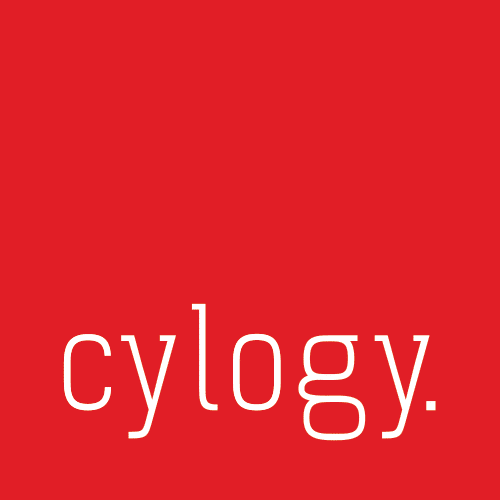Knowing about the deeper trends going on right now will help teams plan their strategy for 2022. Just as we did in 2021, we’ve looked into the Cylogy crystal ball to identify some of the key digital customer experience trends likely to surface in the coming year. Use this post to kickstart your own thinking and generate conversations, or even to come and tell us we’re wrong!
Let’s explore eight digital customer experience trends for 2022!
1. Digital teams aspire for agility
The ability to be more responsive and agile (with a small ‘a’) in a fast-moving, volatile, unpredictable and complex world has become increasingly critical. Digital marketing and customer experience teams aspire to respond quickly and meaningfully to meet customer needs and expectations around high-quality digital experiences; being the first to market can differentiate a brand from its competitors here.
In truth, this has been a theme for several years, but in 2022, we think agility will become even more important in the face of a difficult business climate; digital customer experience is one of the key areas to stand out here. The need to be more agile is driving some of the other trends detailed below, with platforms, products and offerings which combine flexibility and speed looking increasingly attractive.
2. Growing interest in the composable DXP
In 2021, some digital experience platform (DXP) providers such as Sitecore explored the concept of the “composable DXP”, envisaging a platform comprising best-of-breed solutions working together seamlessly through APIs. The advantages of this for marketing teams is the ability to work with the very best solutions that everyone loves to use while avoiding the inflexibility and lock-in of the more complex monolithic DXPs which can impact agility. As a result, providers are increasingly offering part of their platform on a SaaS basis, with a view to combining these into one composable ecosystem.
While we believe the real-world experience of launching a composable DXP is actually considerably more difficult than many would have you believe, we think there is going to be considerable continuing focus and attention on the concept in 2022. We also think there is the potential for the evolution of products that will provide an effective “orchestration layer” to help bring disparate third-party tools together in a composable set-up.
3. More stratification of offerings providing options for all
In the world of digital customer experience, one size does not fit all. We are seeing a growing range of platforms, products and apps to support different organizational sizes, budgets, timelines and required digital experiences. In fact, many DXPs are starting to stratify their offerings to provide a range of choices to meet different needs and budgets; for example, ensuring there is a core digital experience platform, but also a simpler and cheaper platform that might focus more on core CMS features. There may also be a managed instance with site and page templates that acts as a digital “accelerator” offering.
In 2022, we think we will see the continuing stratification of digital experience offerings, particularly as more and more DXP elements are offered as standalone SaaS services. This provides unparalleled choice for digital customer experience teams, which we believe is good for the industry.
4. Competition hots up in the headless CMS space
The concept of headless publishing has been around for years, but it sometimes feels like more has been written about its potential than has actually been put into practice. This may be about to change, especially as competition hots up in the headless CMS space.
Not only are established DXPs emphasizing their headless credentials, but specific headless CMS providers are receiving considerable levels of investment. For example, Contentful has attracted over $250m in funding since 2020, while Prismic, Contentstack and GraphCMS all raised their funds last year. As headless CMSs evolve and improve, this is likely to result in more adoption. We would expect headless publishing to grow during 2022 as a result of this.
5. Tracking cookies start to decline in influence
Customer expectations around the privacy of their data and the subsequent actions of regulators and legislators have overshadowed the use of third-party cookies on websites. Since Google announced the intention for Chrome (the world’s most popular web browser) to no longer support third-party tracking cookies, their eventual decline in influence is inevitable. Although Google delayed its decision to withdraw support until 2023, we can expect third-party tracking cookies to start to wane in influence throughout 2022, and the debate about exactly what will replace them will hot up too. We can also anticipate new tools and approaches to support digital marketing teams.
6. Low-code and no-code influences DCX solutions
“Low-code” and “no-code” are being used extensively to describe virtually every app and technology solution right now, and while these terms are perhaps overused, they do describe the direction of travel for some platforms. Low-code and no-code solutions enable more to be achieved by non-technical staff through configuration and authoring canvases.
We think that in 2022, this will continue to influence DCX solutions, particularly with an increase in SaaS offerings and accelerator platforms which provide ease of use and strong usability, as well as requiring less reliance on developers, particularly for front-end coding. We see this as a good thing, enabling more self-reliance for marketing teams and allowing developers to focus on adding value.
7. WordPress continues to impress as a DXP
In 2023, WordPress will enter its 20th year. Despite its age, WordPress is still the world’s most popular content management stage, and accounts for over 40% of the world’s top 10 million websites. These days, a vast and complex ecosystem around WordPress means there are 5,000 plug-ins in operation, enabling WordPress to be used as the basis for both very simple and very complex sites. You can build an enterprise-grade WordPress site fairly easily due to the platform’s ease of use, effectively making it a fully-fledged digital experience platform.
In 2022, we think the combination of plug-in ecosystem and community support will confirm WordPress as the preferred CMS and DXP of choice for millions of organizations. This might not necessarily be the trend you read about in other predictions posts, but it is happening at scale behind the headlines!
8. For some, old habits die hard
The relentless pace of change in the digital customer experience space shows no sign of abating. There are new channels, new platforms, new practices. Despite this, alongside the inevitability of change accentuated by the impact of the pandemic, old habits die hard. While we think the pandemic has definitely helped to seed the importance of digital customer experience within organizations, many teams are still going about their business in much the same way as before.
In 2022, we can see there being a growing disparity between those teams experimenting, innovating and dipping their toe in advanced practices around personalisation, automation, AI and headless publishing, and those who continue to do what they have always done without necessarily moving forward.
Planning for 2022
Good luck with your planning for 2022! If you’d like to discuss your 2022 roadmap, strategy or projects, then get in touch!





